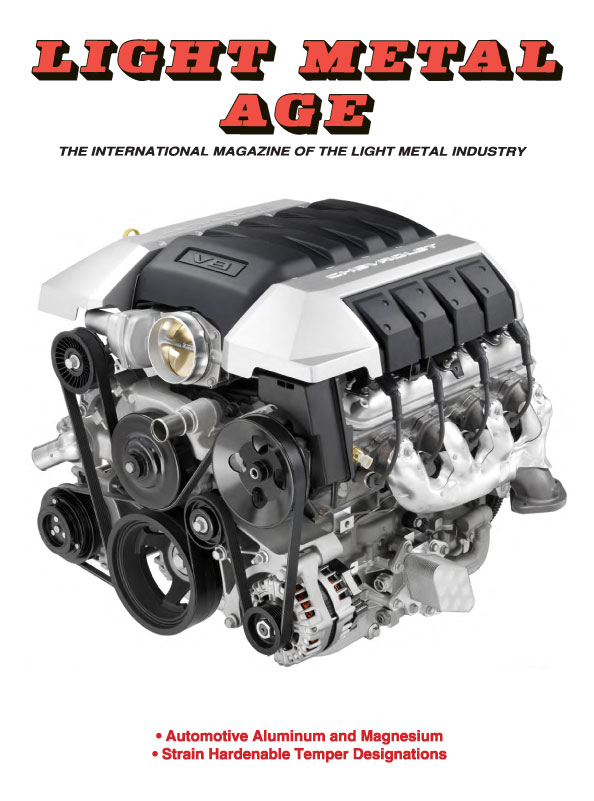
Cover
Photo shows the V8 aluminum engine (weighing 204 lbs) for the 2010 Chevrolet Camaro (printed with permission ©GM Comp.). Engines continue to be the highest volume component for aluminum in automotive applications. The Camaro contains 10% aluminum by vehicle curb weight, including engine blocks and heads, pistons, hood, wheels, transmission housing, differential housings, and brake calipers. Both aluminum and magnesium have shown steady growth in automotive since the 1970s. A number of forming technologies as well as improvements in material properties and cost will increase their greater use inthe future.
Articles
Automotive Aluminum and Magnesium: Innovation and Opportunities
By Paul Krajewski, Anil Sachdev, Alan Luo, John Carsley, and Jim Schroth
Page 6
Offline Programming Enables Robotized 3D-Curved Profile Extrusion
By Dr. J. Bickendorf and Dr. S. Gasper
Page 14
ICEB 2009 Dortmund: International Conference on Extrusion and 3rd Extrusion Benchmark
By N. Ben Khalifa, A.E. Tekkaya, L. Donati, and L. Tomesani
Page 20
Interview with Tim Stubbs, president, Sapa Profiles North America: With Indalex, Sapa Now Has Unmatched Range of Capabilities
Page 24
International Temper Designation Systems for Wrought Aluminum Alloys: Part I – Strain Hardenable (H Temper) Aluminum Alloys
By Joseph C. Benedyk
Page 26
UC Rusal Responds Following Catastrophic Accident at Sayano-Shushenskaya Power Plant
By Alton Tabereaux
Page 32
Magnesium Recycling: State-of-the-Art Developments, Part II
By Daniel Fechner, Norbert Hort, Carsten Blawert, Wolfgang Dietzel, and Karl Ulrich Kainer
Page 34
Hydraulic Upgrade on 2400 UST Press at Kawneer’s Bloomsburg Facility
By Joseph C. Benedyk
Page 38
TMS’09 Photo Layout
Page 40
Global Aluminum Content in Autos
Page 44
